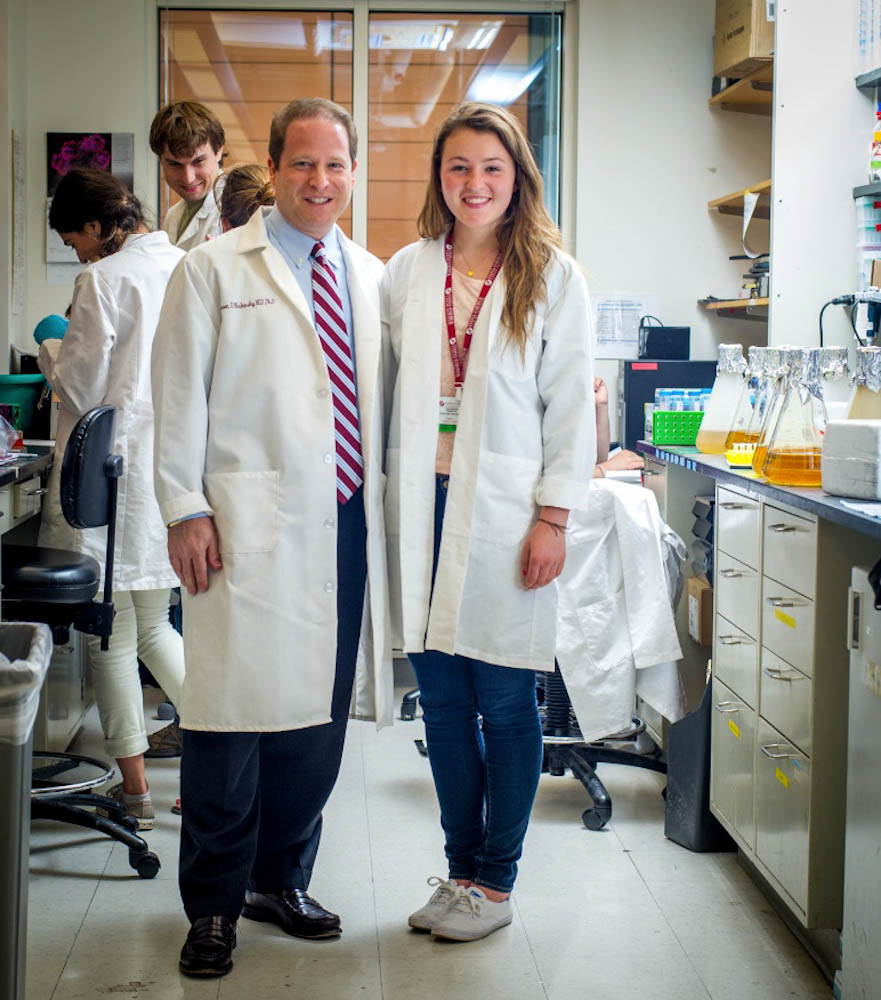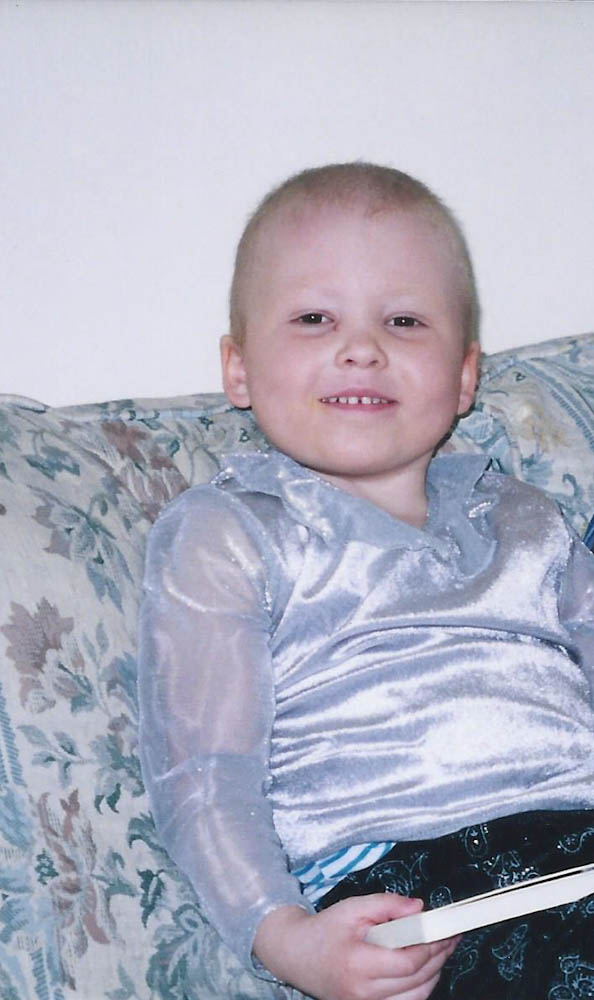
Kate Franklin was 3½-years old in August 2000, when her mother brought her to the Boston Children’s Hospital emergency room because she was bruising easily and couldn’t seem to shake a strep throat. Loren Walensky, MD, PhD, had just started his fellowship in pediatric hematology/oncology in July, and that night Kate Franklin became one of the first patients he diagnosed with cancer. When Walensky told Emily Franklin that her daughter had leukemia, the mother placed her hands on the doctor’s shoulders, and, in a moment that Walensky says he will never forget, she said, “I will see you at her wedding.”
Kate Franklin’s wedding day has yet to arrive, but she’s now a 17-year-old rising senior at Bishop Feehan High School in Attleboro who thinks she wants to be a doctor. This summer she is working in Loren Walensky’s lab, which is exploring the promise of chemically-modified fragments of proteins called “stapled peptides” to treat some drug-resistant cancers.
Kate has been cancer-free since the two years Walensky – now a pediatric oncologist and chemical biologist at Dana-Farber/Boston Children’s Cancer and Blood Disorders Center — spent treating her for acute lymphoblastic leukemia.

They kept in touch, and when Kate contacted Walensky to see if he knew of any laboratories that would take a high school student for the summer, he invited her to participate in his lab’s internship program for high school and college students considering careers in science and medicine.
“It’s good to see how a cool opportunity can come out of a hard time,” says Kate. “It makes it come full circle.”
“It’s the most wonderful thing,” Walensky says. “Every time I look at her I see that spunky, bright-eyed 4-year-old, and here she is all grown up. It’s just profoundly meaningful for her and for me.”
Walensky assigned Kate a project adding various synthetically-altered peptides to tissue cultures of stubborn cancers to see which ones help kill malignant cells. She is learning how to handle the peptides, prepare tissue cultures of cancer cells, and examine the cellular responses using a powerful, sophisticated microscope – all work, Walensky notes, that a graduate student or post-doc could be doing.
 “Other than biology class, I haven’t had the opportunity to do science,” Kate says. “This is the real thing.”
“Other than biology class, I haven’t had the opportunity to do science,” Kate says. “This is the real thing.”
This is exactly why Walensky started his Expose-Inspire-Launch internship program in 2006. The current batch consists of Kate, a 2014 high school graduate about to start college, and a college undergraduate.
 “We’re trying to cultivate the next generation of scientists,” Walensky says. “Having the interns in the lab creates a wonderful dynamic. They remind the older students of those early feelings of ‘wow’ about the wonders of science that inspired them to pursue research careers.”
“We’re trying to cultivate the next generation of scientists,” Walensky says. “Having the interns in the lab creates a wonderful dynamic. They remind the older students of those early feelings of ‘wow’ about the wonders of science that inspired them to pursue research careers.”
Years ago, when Walensky was still a fellow, his patient load grew too rapidly, so a nurse practitioner helped him reassign some patients. Kate Franklin remained on his list. “Kate’s your ray of sunshine,” his colleague told him, “and in this work, you’ll need your ray of sunshine.”
At Kate’s five-year check-up, the critical moment when the hope of having conquered cancer becomes real, Emily Franklin gave Walensky a special gift – a ceramic wall hanging in the shape of a sun. It now hangs in the family room of his home.
Watch Kate’s story that aired recently on the 2014 WEEI NESN Jimmy Fund Radio-Telethon.

Through it all still has that lovely smile.